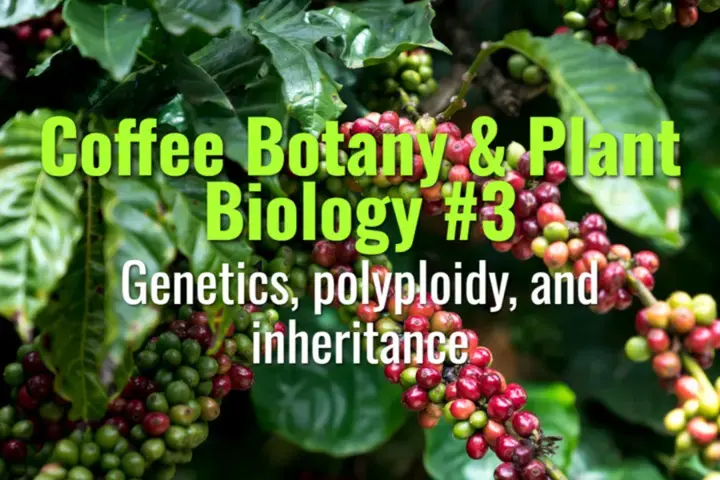Genetics, polyploidy, and inheritance
This topic explores the genetic makeup of coffee species, how polyploidy shaped Arabica’s evolution, and why inheritance patterns are key to breeding programs and future resilience.
- Coffee Basics Nerds
- 2 min read
Article 3 of 12 in Coffee Botany & Plant Biology/

Genetic Background of Coffee
- Chromosome basics: Most Coffea species are diploid (2n = 22 chromosomes). Arabica is an exception as a tetraploid (2n = 44).
- Polyploidy significance: Polyploidy is when a plant has more than two sets of chromosomes, often through hybridization events.
Arabica’s Unique Origin
- Hybridization: Coffea arabica arose from a natural cross between C. eugenioides (low-caffeine, mild flavor) and C. canephora (Robusta, high caffeine, disease resistance).
- Result: Arabica inherited traits from both parents:
- Quality and sweetness from eugenioides.
- Hardiness and caffeine from canephora.
- Polyploid stability: The tetraploid state allowed Arabica to survive and reproduce stably, though with reduced genetic diversity.
Inheritance and Variation
- Low genetic diversity: Arabica’s narrow genetic base makes it vulnerable to pests and diseases (e.g., coffee leaf rust).
- Robusta diversity: Robusta, being diploid and widely distributed, has much greater genetic variability, making it crucial for breeding programs.
- Liberica and others: Minor species also contribute unique genes for adaptation, pest resistance, and flavor.
Role of Polyploidy in Traits
- Hybrid vigor (heterosis): Arabica’s hybrid origin explains some desirable traits, such as complex flavor.
- Gene redundancy: Extra chromosome sets provide backups, but also reduce variability in certain traits.
- Breeding challenges: Crossing tetraploid Arabica with diploid species requires advanced techniques (chromosome doubling, bridge crosses).
Modern Breeding and Genetics
- Marker-assisted selection: Genetic markers help breeders select for rust resistance, cup quality, and yield.
- Genomic sequencing: Coffee genomes have been sequenced, opening doors to precision breeding.
- Biotechnology tools: Polyploid manipulation, tissue culture, and CRISPR gene editing may improve resilience.
Lasting Importance
- Arabica’s polyploidy explains its uniqueness but also its fragility.
- Inheritance studies guide breeding by combining Arabica quality with Robusta resilience.
- Future resilience depends on leveraging the broader genetic pool of wild Coffea species to face climate change and disease threats.